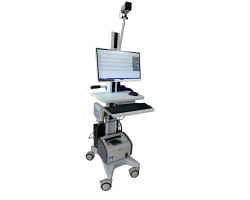Wechat QR code

TEL:400-654-1200

TEL:400-654-1200

Risk factors of chronic acute liver failure with spontaneous bacterial peritonitis
Liver failure is a serious liver injury caused by a variety of factors, leading to its synthesis, detoxification, biological transformation, excretion and other functions of serious disorders and the occurrence of disorders or decompensation, clinical manifestations of coagulation dysfunction, xanthrax, hepatic encephalopathy, ascites. Among the types of liver failure in China, slow acute liver failure (ACLF) is the main disease, mainly caused by HBV infection, which is the common cause of death of liver disease in China. Spontaneous bacterial peritonitis (SBP) is a common and serious complication of ACLF patients. It is mainly caused by pathogenic bacteria through the intestinal tract, lymphatic system and blood, and occurs in the abdominal cavity without direct source of bacterial infection of adjacent organs in the abdominal cavity. The case fatality rate is up to 10% ~ 50%. Therefore, early diagnosis and treatment of patients with ACLF should be adopted to prevent the occurrence of SBP in patients with liver failure, thereby reducing its morbidity and mortality. The aim of the study was to investigate the related factors of spontaneous bacterial peritonitis (SBP) in patients with chronic acute liver failure (ACLF), and to provide reference for clinical diagnosis and prognosis.
The clinical data of 667 patients with ACLF hospitalized in fuzhou infectious disease hospital from January 2009 to December 2014 were retrospectively analyzed, and they were divided into ACLF group (n=232) and ACLF group (n=435) according to whether they were combined with SBP. The general data, laboratory indexes and related complications of the two groups were compared and analyzed. T-test was used for comparison of measurement data subject to normal distribution between groups, while mann-whitney U test was used for comparison of measurement data subject to normal distribution between groups. Independent risk factors of ACLF combined with SBP were analyzed by logistic regression.Meilun

The results of the study
Comparison of laboratory indicators and complications between the two groups showed that Alb (t=-4.110, P < 0.001) and ALT (U=-6). 653, P < 0.001), AST (t=-8.045, P < 0.001), serum sodium (t=-2.879, P=0.006), PTA (t=-2.140, P=0.037), INR (t=1.453, P=0.042), Hb (t=-3.446, P=0.001), and upper gastrointestinal bleeding, hepatorenal syndrome, pulmonary infection (chi-squared value was 48.252, 16.244, 13, respectively. 564, P values of 0.002, 0.031, < 0.001) were statistically significant.Meilun
Further multivariate logistic regression analysis showed that Alb [odds ratio (OR) = 1.119, 95% confidence interval (95%CI) : 1.052 ~ 1.189], PLT (OR=1). 035, 95%CI: 0. 755-1. The differences of 084), upper gastrointestinal bleeding (OR=1.117, 95%ci: 0.072-1.135) and pulmonary infection (OR=2.275, 95%ci: 0.978-5.292) were statistically significant (P values were 0.002, 0.038, 0.022 and 0.036, respectively).
The research conclusion
In the treatment of patients with ACLF, attention should be paid to the prevention of low Alb, low PLT, upper gastrointestinal bleeding, pulmonary infection and other risk factors. Early diagnosis and intervention can help prevent the occurrence of SBP.